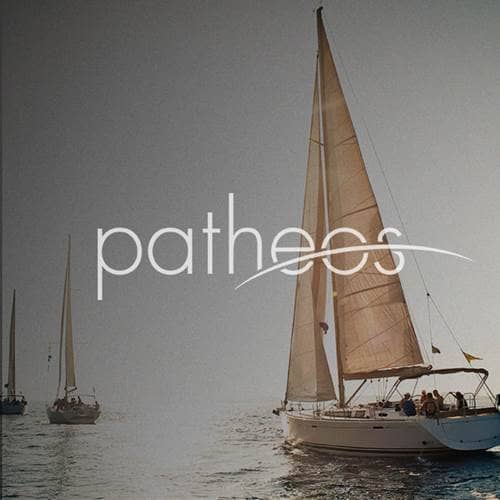- Trending:
- Forgiveness
- |
- Resurrection
- |
- Joy
- |
- Feminism
- |
- Afterlife

RELIGION LIBRARY
Anglican/Episcopalian
Community Organization
Anglican community is experienced at its most basic level in the parish. Long before the Church of England's independence from Rome, the Roman Catholic Church in England (and elsewhere) was divided into geographical dioceses and parishes. After the break from Rome, this system was retained. Each parish consisted of a geographical area that was, in most cases, contiguous with the local township (a town and the surrounding countryside). Within the geographical area of the parish, all residents were entitled to the pastoral care of the parish clergy, who represented and were under the authority of the diocesan bishop. Within the geographical area of the parish, all residents were entitled to the pastoral care of the parish clergy.
The parish system in England is still basically the same today, yet modern transportation networks allow many English Anglicans to choose to attend a church other than their local parish church. A particular church's worship style or theological bent is likely to be the basis of one's choice to attend that church, especially in the cities.
In most areas outside England, the parochial system is not civically defined. Of course there is an effort to disperse churches geographically, and there are administrative functions that are tied to geography (i.e., the diocese), but there is no civic connection between a church and its locality, and Anglicans are not viewed as part of a given parish for the mere reason of living close to the church. "Parish" in these contexts refers not to the area around a church, but to a church and its members, wherever they might reside.
A collection of parishes within a defined geographical area constitutes a diocese, the fundamental ecclesiastical and administrative unit of Anglican organization. A diocese is governed by a bishop, under whose authority the parish clergy minister to parishioners. The bishop's official seat is known as the episcopal see, and is normally in the cathedral of the diocese. The term "see" also refers to the geographical location of the cathedral or diocese--for example the see of Winchester.
A group of contiguous dioceses constitutes a province. This can be a term of some confusion. In The Episcopal Church (TEC, also known as the Protestant Episcopal Church in the United States of America or PECUSA, and often informally dropping the "P" for "Protestant"), for example, there are nine geographical subdivisions known as provinces, within each of which are a number of dioceses. Simultaneously, TEC is a province of the Anglican Communion. The latter usage is the more salient. A province of the Anglican Communion is a group of dioceses having a head bishop (for example, the Presiding Bishop of TEC) or archbishop (like the Archbishop of York). An archbishop's see is known as an archiepiscopal see, such as the see of York. The head bishop or archbishop of a province is also called the primate of the province.
The Anglican Communion is the entirety of the Church in communion with the see of Canterbury. The Archbishop of Canterbury is not the Anglican equivalent of the pope, but rather is honored as "first among equals." The Anglican Communion originally consisted of the Episcopal Church in Scotland and the Church of England, but now there are provinces worldwide.
The instruments or focal points by which unity is sought to be maintained within the Communion are the Archbishop of Canterbury, the (roughly) decennial Lambeth Conferences of bishops, periodic meetings of primates, and the Anglican Consultative Council, an advisory board of both lay and clerical membership from throughout the Communion. Additionally, the Lambeth Quadrilateral (or Chicago-Lambeth Quadrilateral) was adopted in 1888 as Anglicanism's necessary ground for ecumenical union, and 110 years later it was affirmed as a basis of intra-Anglican unity. The Quadrilateral consists of four pillars of unity: scripture as sufficient for salvation and as the rule and ultimate standard of faith, the Apostles' and Nicene Creeds as sufficient statements of the faith, two sacraments of baptism and the Eucharist, and the historic episcopate.
The geographical orientation of the Anglican Communion is currently being challenged. Theological disagreement within the Communion, made patent by its resulting ethical disagreement, has grown to a point beyond what many clergy and laity can bear. In North America, where the difficulties are most acute, many priests, and in some cases entire parishes, have disclaimed association with their bishops. They have sought and received episcopal oversight from sympathetic bishops and provinces overseas, such as in Rwanda, Nigeria, and Uganda. Recently entire dioceses within TEC have voted to withdraw from TEC and realign themselves with the Province of the Southern Cone of America (in South America).
None of these groups is in communion with the see of Canterbury, so they are not officially part of the Anglican Communion. Nevertheless, most are in communion with many other provinces of the Communion. Further, although some opponents of the groups question the groups' adherence to apostolic succession, maintaining proper succession has been a matter of central focus. Their status vis-à-vis Anglicanism is, therefore, highly contentious. TEC, meanwhile, is in communion with Canterbury, but a number of provinces have declared themselves out of communion with TEC. Consequently, there are questions surrounding TEC's status, as well.
The departures from TEC have not been uniform, resulting in a splintering of Anglican bodies within the U.S., but there is a well-developed movement to create a North American Anglican province distinct from TEC and the Anglican Church in Canada with the goal of uniting the disparate splinter groups. The movement is supported by numerous Anglican provinces associated with an emerging worldwide realignment. In June 2008, the Global Anglican Future Conference, or GAFCON, attended by representatives of nearly half the Anglicans worldwide, set forth a statement of faith that includes the authority of the historic creeds, the Thirty-nine Articles, and the nature of the Bible as God's word. It also calls for the formation of a fellowship of confessing Anglicans, and a Primates' Council for recognizing confessing jurisdictions. These North American and worldwide realignments raise fundamental questions regarding the nature and structure of the Communion in the future, not least the continued centrality of Canterbury.
Study Questions:
1. What is the Anglican parish system? How has it evolved over time?
2. What is a diocese? How is it governed, and what is its role?
3. How does the Anglican Communion create unity?
4. How has the Anglican Communion been challenged in contemporary society?










